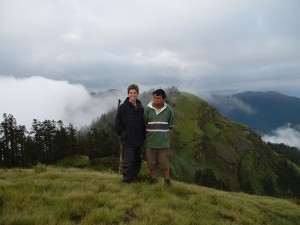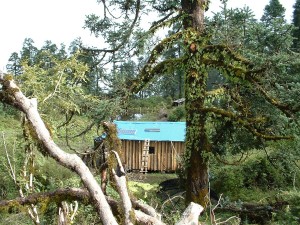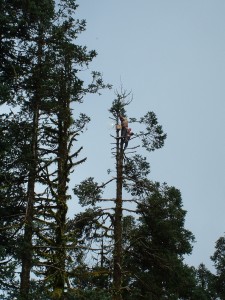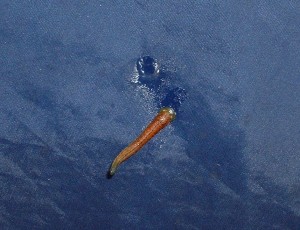After setting up the system in Nangi the group hiked up the mountains to Mohare Danda, about a half days hike. Back in 2003 this area had only a few rough huts and one lone man from Nangi who manned the relay station. The team needed to carry all their food and water because the water source was several hundred feet below the camp. I have been to Mohare Danda and the hike is beautiful. Down one side you can see the Kali Gandaki Gorge and down the other side the Annapurna Mountains. Now it is part of the Community Eco Trek with a comfortable lodge, running water and meals to satisfy the hungriest of trekkers.
Spending only three days and two nights the team installed two addition antennas. There was already one antenna in position and pointing to the next ridge called Kopra. On the cliff side towards Nangi they installed an antenna to pick up the Nangi signal and at the campsite they installed a third antenna to pick up the Pokhara signal. This was done by a man named Purkajet. He simply climbed high into the trees and strapped the
antennas into place using wire and rope. The rest of the team had their doubts and concerns that the system wasn’t secure. The equipment could have easily been broken by wind and snow. It wasn’t sealed against moisture…but it worked. The whole darn system worked. Mahabir knew exactly where to aim the signals and he trusted his time honored methods. I’ve seen construction in Nepal…and at times it reminds me of my father-in-law patching the bathroom tiles with duct tape. But in a resource poor country you learn to be resourceful…and you get very good at salvaging and thinking outside the box.
One hazard of trekking or working in the mountains during monsoon season are “jugas”, known in English as leeches. They team became well acquainted with these nasty critters. I heard about them…these tiny leeches. I thought how bad can it be if you just stay out of the local streams and ponds? How bad can it be…these critters are the prehistoric vampires of the insect world. They don’t live in water like any decent, ecologically abiding leech. They hover on the side of trails and in trees. Using heat sensors they zero in on a warm body and without a sound they inch their way up your boot or soundlessly drop from a tree and latch on…sucking your blood. It isn’t until your boots are squishy with blood or you feel something warm running down your back that you take notice.
Have you ever improvised supplies during a big project. Share your story with my readers and join me next week for the final account of the first wireless system installation.




